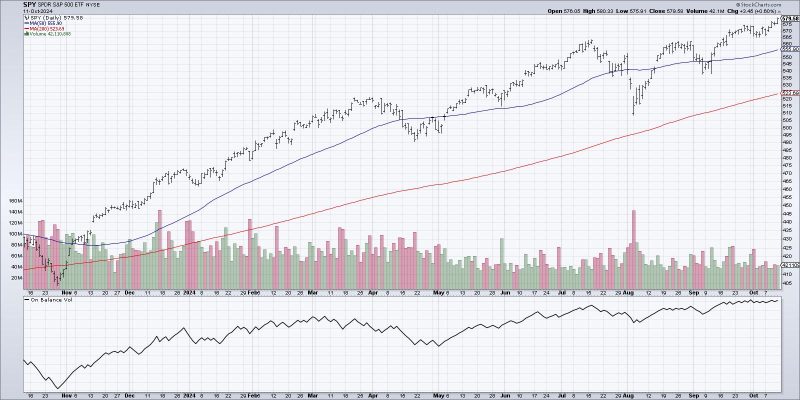In the world of trading and investing, there are numerous technical indicators that traders use to analyze the markets and make informed decisions. One particular volume indicator that stands out among the rest is the on-balance volume (OBV). This indicator, developed by Joe Granville in the 1960s, has gained popularity for its ability to provide valuable insights into market trends and potential price movements.
The on-balance volume indicator works on a simple principle – it measures the cumulative volume flow of a financial asset. The idea behind OBV is that volume precedes price movement. In other words, the volume of trades executed can provide important clues about the future direction of a stock’s price.
At its core, the on-balance volume indicator is calculated by adding the trading volume on days when the price closes higher and subtracting the volume on days when the price closes lower. This cumulative total is then plotted on a chart, often alongside the price movement of the asset. By comparing the movement of OBV with price action, traders can identify trends and potential reversal points in the market.
One of the key advantages of using the on-balance volume indicator is its ability to confirm the strength of a price trend. When the OBV line is moving in the same direction as the price, it indicates bullish momentum. Conversely, if the OBV line diverges from the price movement, it could signal a potential trend reversal.
Moreover, the on-balance volume indicator can also be used to identify potential buying or selling opportunities. For example, if the price of an asset is rising while the OBV is trending downwards, it may indicate that the price movement is not supported by strong volume, suggesting a potential market correction.
In addition to its trend-confirming and signal-generating capabilities, the on-balance volume indicator is also known for its simplicity and ease of interpretation. Traders of all experience levels can easily incorporate OBV into their technical analysis toolkit to enhance their decision-making process.
In conclusion, the on-balance volume indicator is a powerful tool that offers valuable insights into market trends and potential price movements. By analyzing the volume flow of a financial asset, traders can gain a better understanding of market dynamics and make more informed trading decisions. Whether used in isolation or in combination with other technical indicators, OBV is a versatile tool that can help traders navigate the complexities of the financial markets with confidence.




























